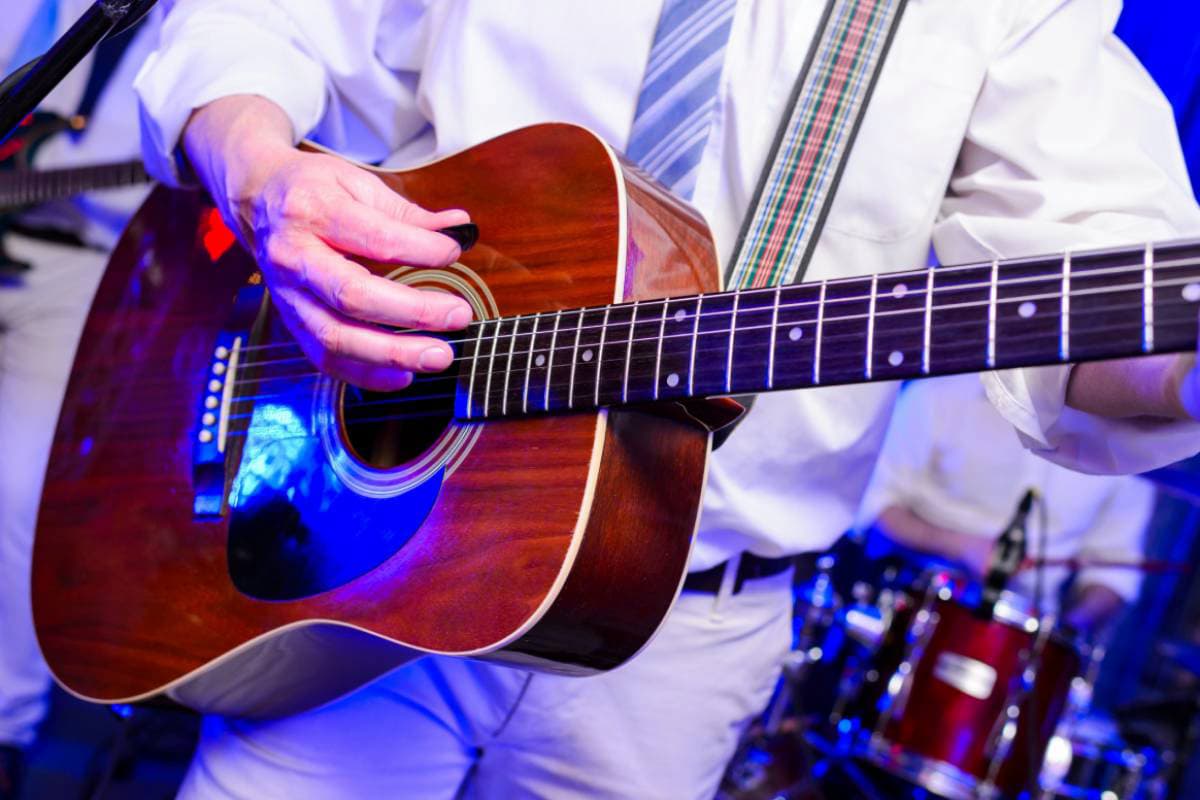There’s nothing more frustrating than getting ready to rock out, plugging your guitar in, and hearing nothing. Unfortunately, technical issues with guitars and amps are not unusual, and there’s a wide range of possible reasons why your amp may not be working with your guitar.
Reasons why your acoustic-electric guitar is not working with your amp include issues with power, cables, connectors, or batteries. Additionally, the connection will not work if the amplifier is in standby mode or is incompatible with your guitar.
In the rest of this article, I’ll further explain why guitars occasionally don’t work with amps and offer a few possible solutions. If you’ve struggled to get your amp and guitar to work together to create the sound you want, then keep reading!
If you want to find out what my recommended guitar gear is, then here is what I recommend on Amazon:
- Fender Cutaway Acoustic-Electric Guitar Bundle (MY FAVORITE GUITAR)
- Snark SN-8 Super Tight All Instrument Tuner (Easiest Tuner I’ve Used)
- 6 String Acoustic Guitar Capo (Best CAPO for quick changes)
- Dunlop Max Grip 1.0mm Nylon Picks (Thick Guitar Pick So You Don’t Lose Grip!)
- Universal Guitar Stand (Cheap & Minimalist Guitar Stand I Recommend)
- Levy’s 2″ Wide Quick Adjust Guitar Strap (Best Guitar Strap For Any Level)
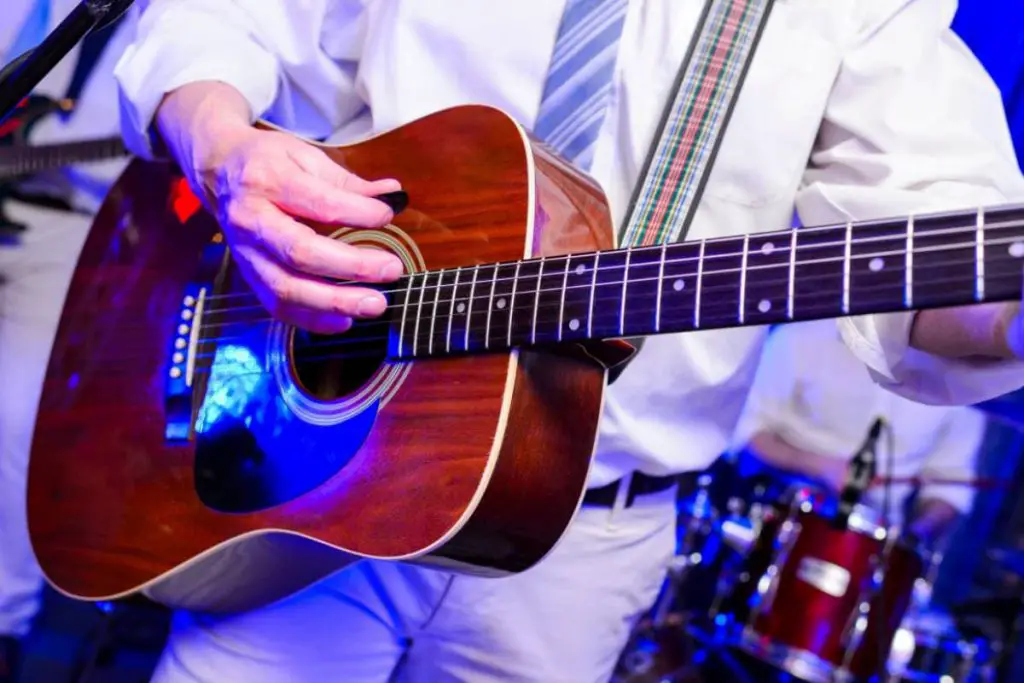
Why Your Acoustic Guitar Isn’t Working With Amp
Acoustic-electric guitars typically don’t work with amps because there is an issue with the cable, batteries, connectors, or the amp isn’t compatible with the guitar (Relevant article: Pros and cons of acoustic electric guitar).
As annoying as sound troubles are, if you are experiencing problems with your amp and guitar connectivity, the good news is that the problem is usually small and easily fixable. It can be as easy as realizing that your amp wasn’t plugged in!
An amplifier is essential for any guitar player who needs that extra oomph or volume from their acoustic-electric guitar, especially if they are playing for a crowd.
If the problem is faulty equipment, the best way to avoid this issue is to try and invest in the best equipment you can from the beginning. This can get expensive, but the time and stress you’ll save will likely pay off in the long run. You should also ensure that you’re properly caring for your equipment to make it last longer and work better.
Below, I’ll offer some suggestions on fixing the issue of your acoustic-electric guitar not working with an amp.
4 Fixes for Acoustic Electric Guitar Not Working With Amp
1. Ensure That the Amp Is Turned On and the Cables and Batteries Are in Good Working Condition
One of the most common reasons why an acoustic-electric guitar isn’t working with an amp is that the amp simply isn’t turned on or plugged in, so the first step is to check and ensure that this isn’t the issue. You can also check if there is an overall power outage to outrule that possibility as well.
You should also ensure that your cables are in good working condition. To check your cables, plug something else in that you know is working properly to see if it still works when plugged into that specific cable.
If the amp and the cable are both working, if you turn up the volume on the amp and touch the end of the cable, there should be a loud humming noise. If you don’t hear a noise, this indicates that either your amp or your cable is faulty.
The best way to prevent sound problems is to use premium-quality equipment, including the cable. Whether you’re just casually playing your guitar, recording, or playing for a crowd, you need a high-quality cable to achieve the sound quality you’re looking for.
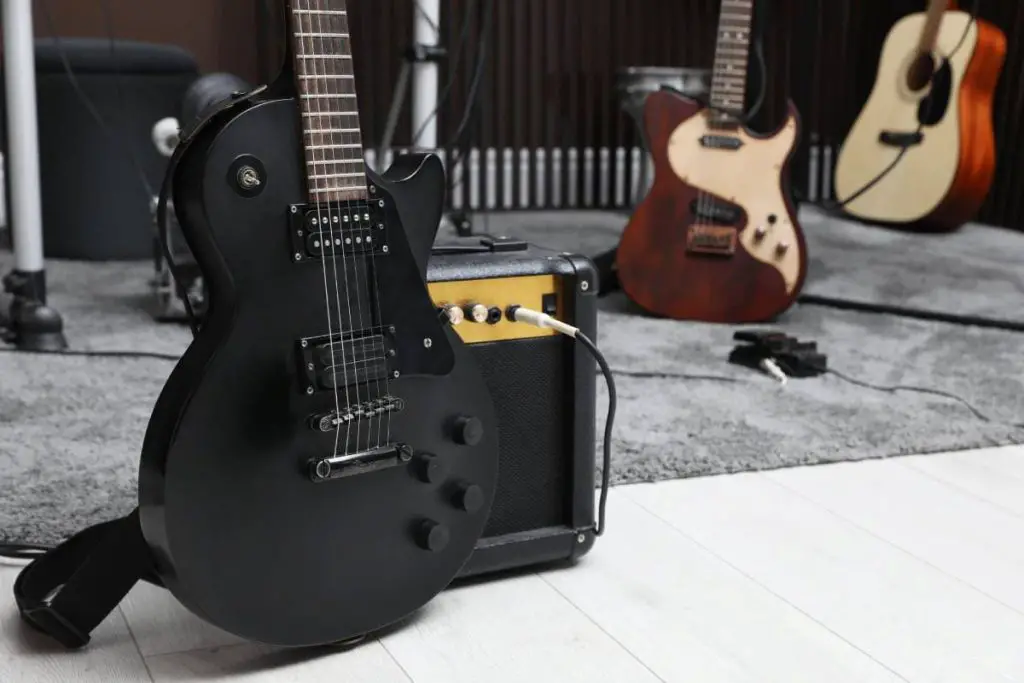
The following table outlines some of my top recommendations for the best guitar cables on the market. All the links are to Amazon.com:
| Product | Why I Love It |
| Mogami Gold INSTRUMENT-10 Guitar Instrument Cable | Comes in 3, 6, 10, 18, and 25-foot lengths Regularly used by professional studios Innovative technology with an ultra-high density spiral shield and a sub-shield that silences unwanted noise Carbon-impregnated PVC is used for the insulation material Gold-plating makes the cable more resistant to corrosion and tarnishingLifetime warranty |
| Fender Performance Series Instrument Cables | Great option for those on a tight budget Comes in 5, 10, 15, 18, and 25-foot lengths Equipped with a PVC jacket Deliver clear tones with minimum noise level Flexible and allows for twists and tangles |
| Ernie Ball Braided Instrument Cable | Comes in 10, 18, and 25-foot lengthsBraided cable is flexible and allows for twists with minimal damage Durable Dual conductor system provides crisp highs, tight mids, and rich harmonicsMany different color options Made of 99.95% oxygen-free copper for rust prevention |
| D’Addario Guitar Cable | Comes in 10 and 15-foot lengths Affordable price 100% shielded coverage 95% tinned copper braiding Made in the United States with durable and high-quality construction 22 AWG oxygen-free copper conductor Especially good for stage use |
If you have a high-quality cable, you’re far less likely to experience issues with your guitar not working with your amp because of electric connectivity problems. This is especially true if you take good care of your cables. Here are some recommendations on how to make your cables last longer and work better:
- Use the shortest guitar cable that will still work for your needs and setup. Sometimes you need a longer cable so you can move around more, or you can stand further away from your amp and other sound equipment, but in general, the shorter the cable, the fewer problems you’ll have. This is because you won’t have to deal with excess cable getting in your way or getting too close to a power source.
- Avoid stepping on or smashing your cables. This should go without saying, but you should try to keep your cables out of the way as much as possible so they don’t get trampled by feet or crushed by heavy equipment.
- Coil your cables for storage. When you’re done using your cables, coil them into a circle the diameter of a basketball. Simply balling up a cable or twisting it into a figure 8 is not good for the cable as it causes tiny breaks in the shielding, introducing unwanted noise into your signal.
- Clean your guitar cables regularly. You should run a damp cloth up and down the cable every few weeks to remove dirt, dust, and other build-up. This keeps your cables looking great and reduces the amount of wear that the shield must protect against.
If everything is plugged in and your cables seem to be in good shape, it’s time to check the batteries. If you have a 9v powered Expression System, an ES-T, or an ES-N, an easy way to check the status of your batteries is to look for the battery indicator light inside your guitar. This light should be on whenever a cable is plugged into your guitar. If the light isn’t on, this indicates that something is wrong with the battery.
To fix the issue, you should use two new batteries and triple-check that you are putting them in properly, with the flat end first.
2. Regularly Check Your Connectors
Connectors should always be in optimal condition for amps, cables, and everything else to work properly. If the connectors aren’t working or corroded, the connection won’t work, the connector will stop the current flow, and the amp will fail.
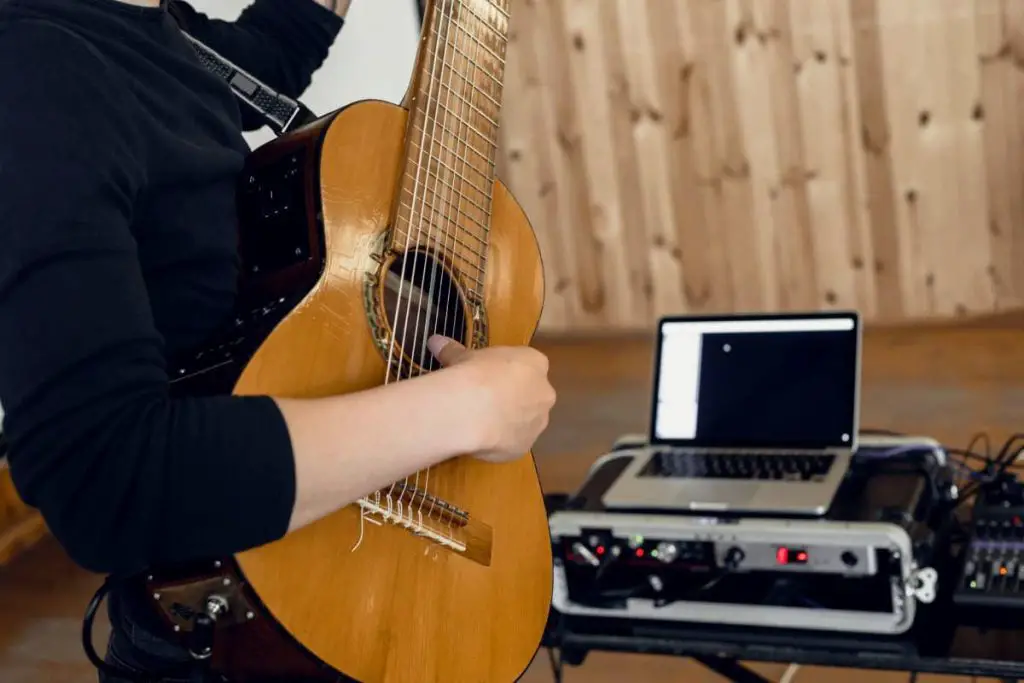
Connectors are used to connect or disconnect the path of an electric current, and many different kinds are made to perform in various conditions, including in extreme temperatures and weather.
To ensure that your connectors stay working the way they should, you should clean them every few weeks. To do this, spray them with some cleaner and rub them with a soft cloth. My favorite cleaner for this purpose is the Hosa D5S-6 CAIG DeoxIT 5% Spray Contact Cleaner from Amazon.com because it is completely safe to use on metal connectors, doesn’t harm plastics, reduces intermittent abrasion and connections, and improves connectivity.
Keeping your connectors clean will remove any corrosion or oxidation, which improves the contact between the connector and the amp, thereby improving the overall signal chain and sound quality.
3. Turn “Standby Mode” Off
Some amplifiers have a standby switch in addition to a power switch, and if you’re not used to this feature, it can be a bit confusing and cause unnecessary alarm. Tube amplifiers need time to warm up before they are in operating condition, so manufacturers added the standby switch to reduce wear and tear on amps.
When an amp is in standby mode, the amp is not sending the full available voltage to the tubes. Instead, the amp is simply warming the tubes up so they’ll be ready when you’re ready to play. It’s similar to an athlete stretching before a game; they aren’t putting in their full effort; they’re just getting their muscles ready for later use.
Musicians often put their amplifiers into standby mode as soon as they get to a venue, so the equipment has enough time to properly warm up while they’re getting everything else set up. In general, you only need to have an amplifier in standby mode for one or two minutes before playing at full volume.
The standby switch is a useful tool, but if it is on and you are unaware and try to play, you won’t hear any sound coming out of your amplifier. Therefore, always check that standby mode isn’t activated if you’re having these types of issues.
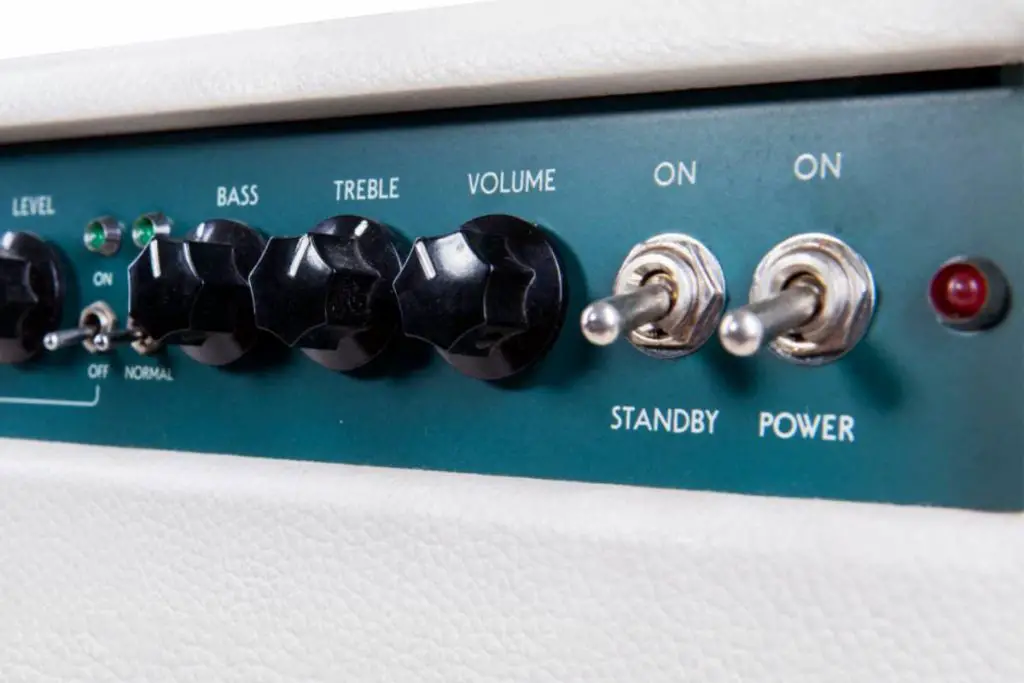
4. Ensure That Your Amp Is Compatible With Your Guitar
The last thing you want to make sure of is that the amplifier you’re using is compatible with the kind of guitar you have. There are different kinds of amps, each one providing different sound quality with your acoustic-electric guitar.
The best amp to use for this purpose is an acoustic amp, as opposed to an electric one. Your goal when using an amplifier is to make the tone louder, not to change it or distort it in any sort of way. Many acoustic amps feature woofers and tweeters that allow players to play low and high frequencies, and many feature an input for microphones and other built-in effects.
You can use an electric amp with your acoustic-electric guitar, so if you already have an electric amp on hand, you may be tempted to use it. This is completely up to you, but if you notice distorted sound, the problem may not be the connectivity. Still, it may just be that your amplifier isn’t very compatible with your acoustic-electric guitar and isn’t producing the tone you’d like.
When selecting an amplifier for your guitar, there are several features that you should consider:
- The number of channels. Many amplifiers have more than one channel, making it possible to plug in more than one instrument. This is great for band setups, as you’ll likely need to plug in a microphone. Multiple channels also allow you to switch between different types of sounds, usually through a foot switch.
- The size and type of inputs. Amplifiers have different inputs of various sizes for microphones and other instruments, so depending on your specific needs and your stereo, you may need to shop around to see what will work best.
- The variety of acoustic effects. Some amplifiers feature effects that you can use to add uniqueness and interest to your sound, including reverb, chorus, and echo.
- The size and portability. If you’re just getting started, a smaller practice amp is best to get you used to using an amp and lugging it around. Smaller amps are also better for musicians who travel a lot, as carrying around a heavy amplifier can get old fast.
- The number of feedback control options. Amps provide different ways to control feedback, including notch filters or a single button. If you’re a beginner, you may want to go with something simpler, whereas professionals and long-time players may be happier with more complex options.
If you use a bass amp instead of a guitar amp, you might be experiencing some sound issues (Related article: can you use a guitar amp for a bass guitar). This is because bass amps are optimized for low-frequency notes and require more wattage to output a higher volume, which can make acoustic-electric guitars sound dull. It is best to get a dedicated guitar amp that can produce sounds optimized for the guitar’s wider range.
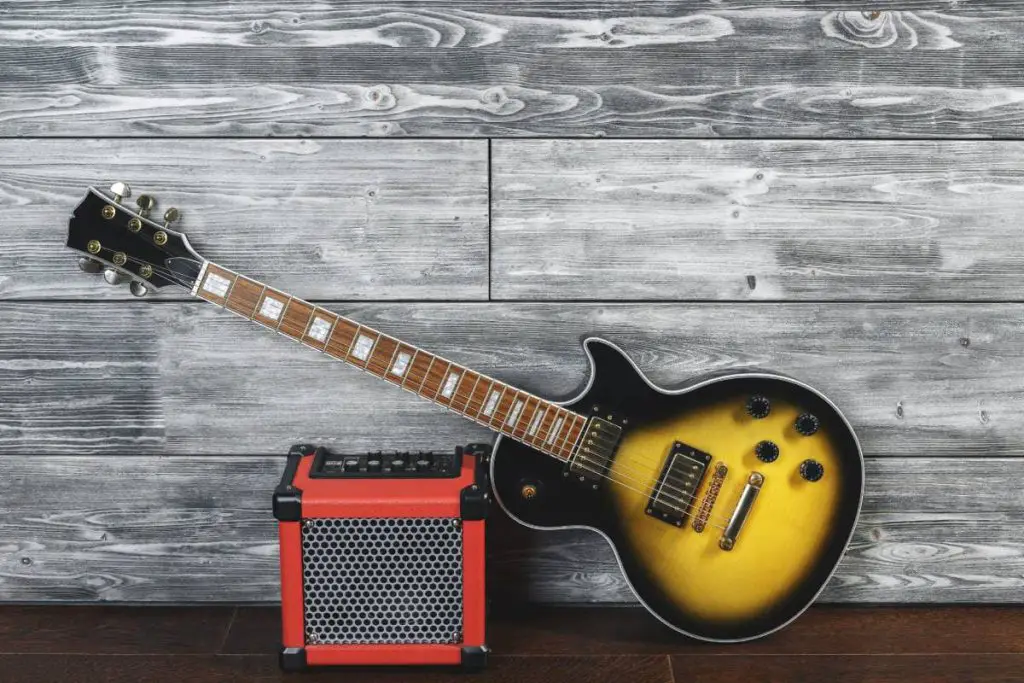
The following table outlines my recommendations for the best guitar amplifiers that work well with most acoustic-electric guitars. All links are to Amazon:
| Product | Why I Love It |
| Positive Grid Spark Guitar Amplifier | Positive Grid BIAS Tone Engine Modeling Technology, which covers all tones Thirty amp models to choose from Forty different built-in effects Comes with an accompanying app that has additional interesting features The Smart Jam feature can generate a backing track for you to play to Sounds great at low volumes Speaker setup fills any room with a satisfying sound |
| Fender Blues Junior IV 15 Watt Electric Guitar Amplifier | Very portable and simple to use FAT switch widens frequencies and adds oomph to single-coil tones Great for building unique tones with Effects pedals Modified preamp circuitry provides better tonal definition and clarity Includes a 1-button that allows you to activate the “Fat” switch remotely, which boosts the midrange Great for blues and jazz players |
| Blackstar HT20R MKII 20-Watt 1×12 Inches Tube Combo Amp with Reverb | Affordable option that is similar to amps that are double or triple the price Footswitchable overdrive voicings Solitary tone control Tight mids Treble chime Overdrive channel with classic and high gain voicings Loud enough for the stage but can be powered down to 2 watts |
| Fender 68 Custom Princeton Reverb Amplifier | Loud enough for small shows Silver-panel and aluminum grille cloth trim Reduced negative feedback Hand-wired valve sockets Modern tone circuit gives tonal flexibility with the pedals Includes a fitted amplifier cover and a two-button footswitch World-class vibrato effects |
| Roland JC-120 Jazz Chorus 120-Watt Guitar Amplifier with Two 12-Inch Speakers | Lush onboard stereo chorus effect Transparent and preserves the tone Two input channels with three-band EQ and bright on/off Built-in vibrato and distortion Authentic spring reverbRecognized by professionals as the benchmark in clean guitar sound |
You should also ensure that you provide your guitar amp with proper care and maintenance. This is important to maintain great sound quality, but it also protects your investment. High-quality guitar amplifiers aren’t cheap and can set you back thousands of dollars, so you want to ensure they last as long as possible. Here are some care tips:
- Avoid sources of heat, such as radiators
- Keep the amplifier well-ventilated
- Allow the amp to warm up before you start to use it, and give it ample time to cool down
- Use an amplifier cover so it doesn’t get rained on (or splashed with beer!)
- Be mindful when transporting, so the amp doesn’t bounce around too much
- Ensure the volume isn’t turned up before you turn it on
- Use a dust cover and remove dust regularly
- If you have a tube amplifier, replace the tubes every two years or so
If your acoustic-electric guitar isn’t working with your amp, it may just be a case of a mismatch. You should always research and ensure that the amplifier you’re using will work with your guitar because if they aren’t compatible, you may struggle with low sound quality.
Final Thoughts
Sound problems are undeniably frustrating, but they’re unfortunately part of the music playing process for many musicians. However, through a quick troubleshooting procedure, many amp issues can easily be solved. Generally, the solution is as simple as ensuring that everything is plugged in correctly and that the cables are working.
If you want to find out what my recommended guitar gear is, then here is what I recommend on Amazon:
- Fender Cutaway Acoustic-Electric Guitar Bundle (MY FAVORITE GUITAR)
- Snark SN-8 Super Tight All Instrument Tuner (Easiest Tuner I’ve Used)
- 6 String Acoustic Guitar Capo (Best CAPO for quick changes)
- Dunlop Max Grip 1.0mm Nylon Picks (Thick Guitar Pick So You Don’t Lose Grip!)
- Universal Guitar Stand (Cheap & Minimalist Guitar Stand I Recommend)
- Levy’s 2″ Wide Quick Adjust Guitar Strap (Best Guitar Strap For Any Level)
Related Posts:
- Guitar Amp Not Working but a Light Is On? How To Fix It
- 10 Reasons Why Guitar Amps Buzz (and Easy Fixes)
- How To Tune Your Electric Guitar Without an Amp
- How To Test an Electric Guitar Without an Amp
- Electric Guitar vs. Acoustic Amp: Differences Explained
- Will an Electric Guitar Damage a Bass Amp?
- Will an Acoustic Amp Work With an Electric Guitar?
- Best Reverb Pedals For Guitar
- Best Guitar Amps: tube, solid-state and modeling amplifiers for all budgets (Acoustic, Electric)
- Best Electric Guitars
- Best Acoustic Guitars
- Best Acoustic Guitars Under $500

